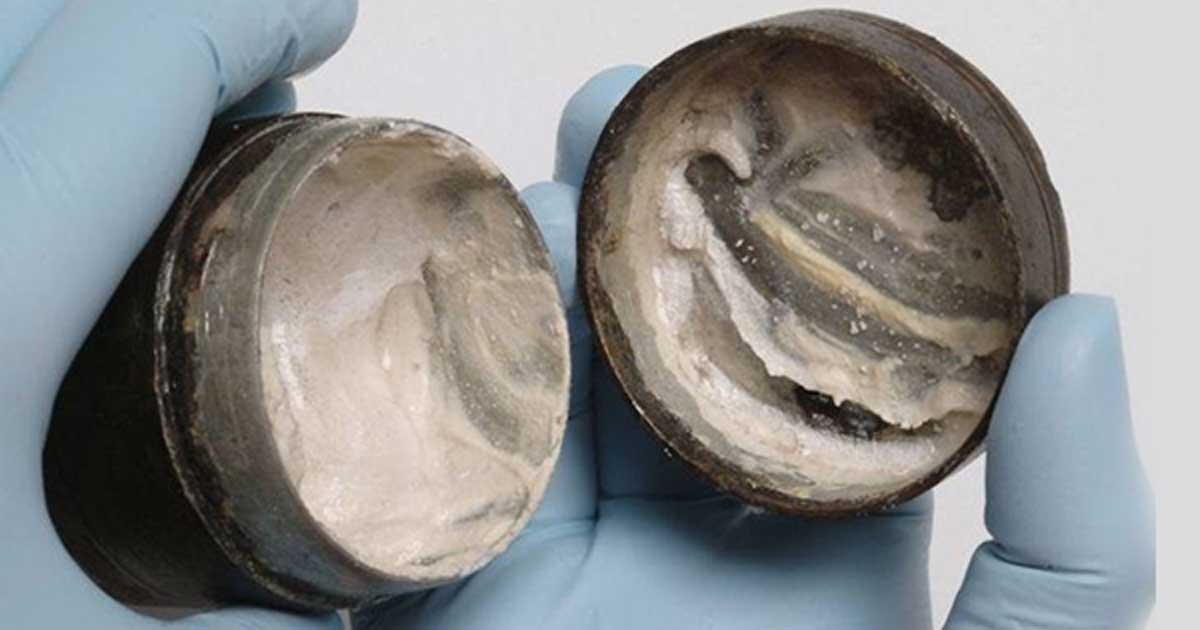Scientists Amazed to Discover 2,000-Year-Old Face Cream Still Containing Last Finger Imprints
When archaeologists came across a tin containing an unknown 2000-year-old ointment they were both pleased and bemused. It was not discovered in a home as one might think, but rather near an ancient Roman temple in London.
The location of its discovery initially led researchers to believe it was an ointment used for healing or rituals. However, a detailed analysis was able to reveal its ingredients - animal fat, starch, and tin for pigment – revealing that it was none other than a tinted Roman face cream.

The Roman canister containing the original cream and b) the recreation produced by Evershed’s team. Image: © Nature
The Roman face cream was found in an ornate tin pot that is 6 by 5 centimeters (2.4 by 2 inches) and is of such high quality that it is comparable to the cosmetics produced today. When the archaeologists opened the pot, they were almost knocked over by the toxic smell! Reminder: Always check the expiration date on cosmetics!
This type of face cream would most likely have belonged to a wealthy woman, or possibly a temple prostitute. The temples were not just erected and used by the soldiers, but were being utilized by those of different classes and standings.
Was the owner of this face cream Roman or a Briton? We do not know. But we do know that they agreed with Lancôme and decided to “Believe in Beauty” - or at least the Roman version of beauty.
- Swans Fat, Crocodile Dung, and Ashes of Snails: Achieving Beauty in Ancient Rome
- Bygone Beauty and Body: The Origins of Cosmetics in the Ancient World
- 4,000-year-old cosmetics shop found in Cyprus

Woman, painting a statue of Priapus. Roman fresco from the Casa del Chirurgo in Pompeii. (Public Domain)
This find supports the fact that Roman culture was thriving in London at this time and there was a desire to incorporate all things Roman. Roman face cream was traditionally created with lead to create the desired tint. Lead was not as readily available in the British Isles, but tin was, and the manufacturer of this cream went to the trouble of recreating a similar face cream with local ingredients rather than possibly importing it.
The Romans valued white skin. So, it has been suggested that the finding of the white-tinted face cream could signal that the population of London was assimilating to the culture of Rome in more ways than just architecture.
Due to the fact that someone 2,000 years ago lost or threw away their face cream, the path is now being smoothed for archaeologists and historians today to reconsider the complexity of life in Roman London.
Top image: Wall fragment with Two Women Roman 1-75 CE Plaster and pigment fresco. (CC B-NC-SA 2.0)
By Nicole Callaway, B.S. Anthropology and Sociology



















